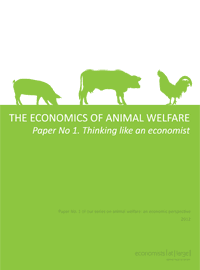Animal welfare issues have been in the headlines regularly in Australia and around the world in recent years. Examples include Australia’s live animal export trade, both in cattle to Indonesia and in sheep to the Middle East (see Coorey & Allard, 2011; Taylor, 2012), calls to ban or curtail hunting of ducks in Victoria, Australia (Patterson & Levy, 2012), or of lions in Africa (Goldenberg, 2011). The European Union delighted animal protection groups by placing a ban on battery hens for egg production earlier this year (Singer, 2012).
With video cameras shrinking and social media expanding, this trend seems set to continue. Images of animal cruelty spread like wildfire on the web and incite an instant reaction from the public. Only days after footage of Indonesian slaughterhouses was shown on Australian television and the internet, the Australian government acted to suspend the export of live cattle to Indonesia, as a response to the massive public outcry. Similar reactions are expressed all over the world after similar incidents.
Nobody likes to see these images. No one endorses cruelty to animals, though clearly standards of what constitutes “cruelty” differ widely between people. So when controversy around an animal welfare issue emerges, often it is not the cruel practice itself that is defended, but the economic necessity of it that is insisted. Just a few examples include:
Australia’s live export industry in 2009 earned $996.5 million and supported approximately 10,000 jobs in rural and regional Australia (Department of Agriculture, Fisheries and Forestry, 2012).
Live export of sheep was valued at $323 million in 2010, with the Middle East being Australia’s biggest overseas market importing 99% of Australian sheep exports (LiveCorp & Meat and Livestock Australia, 2011).
Hunters and hunting actually benefit Africa’s lions — as well as its humans. Revenues from hunting generate $200 million annually in remote rural areas of Africa. (Rudolph & Hosmer, 2011)
[Duck hunting] generates more than $70 million each year and supports jobs in hospitality, the supply of vehicles, boats, firearms and ammunition, plus camping and hunting equipment (Walsh, 2011)
However, while economic values are often cited by defenders of “cruel” practices, it is not right to simplify these issues as being a matter of “dollars vs. animals” or the “economy vs. animal welfare”. To try and put some perspective into the economics of animal welfare, we hope this will be the first of several short papers to explain how economists think about animal welfare.

